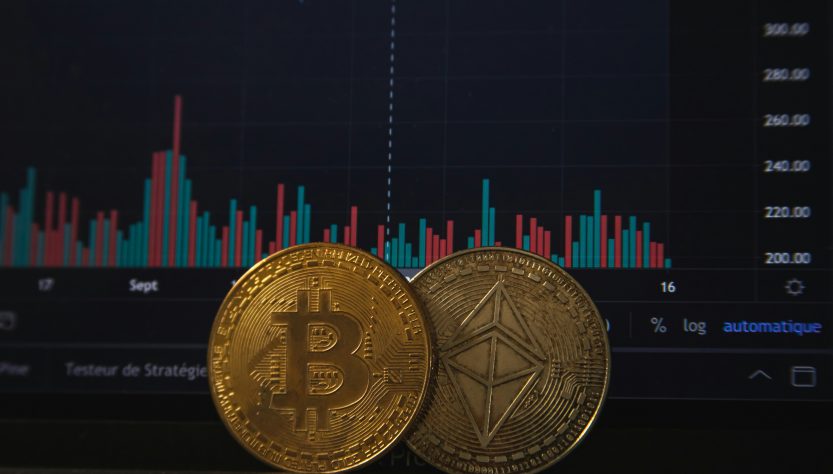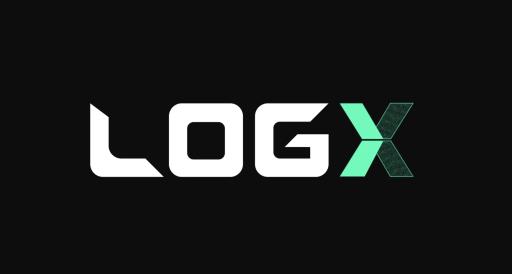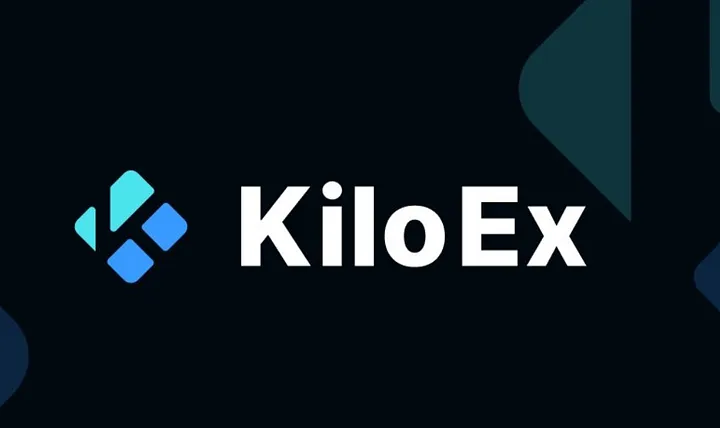Introduction to Cryptocurrency Trading
Welcome to the dynamic world of cryptocurrency trading, a domain where digital currencies are exchanged, and fortunes can be made or lost in the blink of an eye. This guide is drawn from years of navigating the crypto waves, sharing insights to help you understand and succeed in this volatile market. Cryptocurrency trading isn’t just about buying low and selling high; it’s a journey through a rapidly evolving landscape, where innovation and risk walk hand in hand.
Understanding the Cryptocurrency Market
The crypto market is unlike any traditional financial market. Open 24/7, it offers endless opportunities for traders but comes with its unique set of challenges. Volatility is the name of the game; prices can skyrocket or plummet within hours. Understanding market trends, liquidity, and the impact of global events on crypto prices is crucial for any trader looking to carve out success in this digital frontier.
I started out trading blind, willing a cryptocurrency to move in one direction or another, often wishing a crypto to rise, but inevitably due to the volatility you can find yourself in large negative positions quickly. It doesn’t take long to realise that crypto trading isn’t like placing your football bets on a Saturday morning. It requires careful planning, understanding the market, it’s tends and how external factors affect movement in the market.
I won’t be able to cover everything in this guide, and I certainly still don’t consider myself anywhere near an expert but hopefully I can pass on some reasonable insights and principles that I’ve learnt to stick by over the time.
Deciphering Common Trading Platform Terms
To navigate the crypto trading platforms effectively, it’s essential to understand the language used. For beginners, a trading dashboard can look quite daunting. Those familiar with other types of trading will understand these terms.
Limit Orders vs. Market Orders
Limit orders allow you to buy or sell at a specific price or better, offering control over execution price. Market orders execute immediately at the current market price, prioritizing speed over price control.
Price
For Limit Orders, ‘Price’ refers to the current market value of a cryptocurrency.
Size
This refers to the quantity of an asset being traded. In the context of cryptocurrency trading, it indicates the amount of a specific cryptocurrency you wish to buy or sell in a transaction. Size can be expressed in terms of the crypto asset itself (e.g., 2 BTC) or in the fiat currency equivalent (e.g., $10,000 worth of BTC), depending on the platform’s interface and the trader’s preference.
Long vs Short
Long Position (Going Long): This term is used when a trader buys a cryptocurrency with the expectation that its value will increase over time. Going long reflects an optimistic outlook, where the trader aims to profit from the rising prices of the asset.
Short Position (Going Short): In contrast, taking a short position involves selling a cryptocurrency. Traders go short when they anticipate that the price of the cryptocurrency will decline, allowing them to profit from the difference.
SL (Stop Loss) Price
A critical tool for risk management, allowing traders to set a loss threshold, beyond which the trade automatically closes to prevent further losses. In simple terms, if the price is hit, the trade is stopped for a smaller loss than if it continued to move into a further negative position. E.g. Buying $100 of bitcoin at $50,000 and setting a stop loss of $49,000 would stop the trade when it reaches $49,000 – approximately $2 loss.
TP (Take Profit) Price
Similar to SL, but it’s where you set a target price to secure profits automatically, ensuring you don’t miss out on potential gains.
Leverage
This is where traders make or lose alot of money. Leverage allows you to “borrow” money during the trade at rate often between 2x and 100x of your original Size. So for example if you put a $100 trade on, you can leverage this with 50x which would effectively increase the trade size to $5000. While this might sound exciting and can increase the amount you could effectively take, the larger the leverage the quicker you lose money if it goes the wrong way 50x quicker in this example. If you placed a Long trade on Bitcoin at $50,000 with $100 and the price reaches reaches $49,000, you would lose all of your original $100. This is known as liquidation.
Liquidation
Liquidation occurs when a trader’s position is closed forcibly by the exchange because the trader’s margin balance falls below the required maintenance margin level. This mainly happens during Leverage trading (see above). Understanding liquidation is crucial, especially in margin and futures trading, as it highlights the importance of risk management strategies such as setting appropriate stop-loss orders to protect against unwanted losses.
Types of Cryptocurrency Trading
Cryptocurrency trading can be approached in various ways, each with its own set of strategies, risk levels, and time commitments. The most common types include day trading, swing trading, and HODLing. Additionally, understanding the difference between futures trading and spot trading is crucial for traders looking to diversify their strategies.
Day Trading
Day trading involves entering and exiting positions on the same day, capitalizing on short-term market fluctuations. Traders employing this strategy spend considerable time analyzing charts, news, and other market indicators to make quick decisions. The primary goal is to generate profits from small price movements within the day. This approach requires a high level of attention, quick decision-making, and a thorough understanding of market trends. The high frequency of trades also means higher transaction costs, which can eat into profits.
Swing Trading
Swing trading takes advantage of price “swings” or trends in the market over a period of days to weeks. Unlike day traders, swing traders are willing to hold positions for more extended periods to capture more significant price movements. This strategy requires patience, a good grasp of market trends, and the ability to withstand market volatility without reacting hastily. Swing trading is less time-intensive than day trading, making it more suitable for those with less time to dedicate to the markets daily.
HODLing
A term originated from a misspelling of “holding,” HODLing refers to buying and holding a cryptocurrency for a long time, regardless of market volatility. This strategy is based on the belief in the long-term growth potential of cryptocurrencies. HODLers are typically less concerned with short-term price fluctuations and more focused on the potential for substantial gains in the future. This approach requires the least time commitment but demands a high tolerance for risk and patience.
Futures Trading vs. Spot Trading
- Spot Trading involves the immediate buying or selling of a cryptocurrency for instant settlement on a spot date. The transaction occurs “on the spot,” meaning as soon as the trade is executed, ownership of the asset is transferred. Spot trading is straightforward and is what most people think of when they consider buying and selling crypto.
- Futures Trading involves contracts to buy or sell a specific asset at a predetermined price at a future date. These financial instruments allow traders to speculate on the future price movements of cryptocurrencies without owning the underlying asset. Futures trading can be used for hedging risks or speculative purposes. It offers the advantage of leverage, meaning traders can control large amounts of cryptocurrency with a relatively small capital investment. However, this also comes with increased risk, including the potential for significant losses.
How to Start Trading Cryptocurrencies
If you’re new to crypto, you might find reading our Basic Guide to Cryptocurrency a good start. Start buying and selling cryptocurrency within an exchange or buy a cryptocurrency to HODL (hold for the long term).
If you’re looking to begin your journey into futures trading, begin by choosing a reputable exchange, understanding the fees, and the chains they use. This is important as some chains have higher gas fees than others. Exchanges like Hyperliquid allow you to deposit and withdraw your funds into an account, meaning you only pay gas fees the once rather than on every trade.
As with all activity in Crypto, security is paramount, so ensure you have a reliable digital wallet for storing your assets. I’ve used many so look out for a future post on them. Before diving in, educate yourself on market analysis techniques, and start with small, manageable trades to learn the ropes.
Analyzing the Market
Successful cryptocurrency trading relies heavily on the ability to analyze and interpret market data. This analysis falls into two main categories: Technical Analysis (TA) and Fundamental Analysis (FA), each offering unique insights into market dynamics.
Technical Analysis (TA)
Technical Analysis involves the study of past market data, primarily price and volume, to forecast future price movements. TA practitioners use various tools and indicators to identify patterns, trends, and potential trading opportunities. Key concepts include:
- Chart Patterns: Shapes and formations created by price movements, such as head and shoulders, triangles, and flags, which can indicate potential market directions.
- Trend Lines and Moving Averages: Tools to identify and confirm the market’s direction. Moving averages smooth out price data over a specific period, making it easier to spot trends.
- Volume: Analyzing trading volume can help confirm trends; for instance, a price move on significant volume is more likely to be sustainable.
- Oscillators and Indicators: RSI (Relative Strength Index), MACD (Moving Average Convergence Divergence), and Bollinger Bands are tools that help identify overbought or oversold conditions, potential reversals, and market momentum.
Websites like TradingView have most of the above details to be able to perform analysis on different crypto coins & tokens. The difficult bit is knowing how to interpret the information, the answer is experience, watch, read and learn. See the last section of this blog for more of a specific recommendation of how to approach cryptocurrency trading
Fundamental Analysis (FA)
Fundamental Analysis in the crypto space involves evaluating a cryptocurrency’s underlying value by examining related economic, financial, and other qualitative and quantitative factors. FA can include:
- Project Viability: Assessing the purpose, utility, and technological backing of the cryptocurrency. This includes the development team, the problem it solves, and its adoption potential.
- Market Sentiment and News: Keeping an eye on news, regulatory developments, and the general sentiment within the crypto community, as these can have significant short-term and long-term impacts on prices.
- Economic Indicators: Factors like inflation rates, interest rates, and economic growth metrics that could influence the cryptocurrency market.
- Competitor Analysis: Comparing similar cryptocurrencies or projects can provide insights into a coin’s strengths, weaknesses, and overall market position.
Combining Technical and Fundamental Analysis
The most effective market analysis often comes from combining TA and FA, offering a more holistic view of potential investment opportunities. While TA can provide insights into when to buy or sell, FA can help determine what to buy or sell based on underlying value and long-term potential.
Risk Management in Cryptocurrency Trading
Effective risk management is essential in cryptocurrency trading to protect against significant losses and enhance the potential for profits. Given the market’s volatility, implementing robust risk management strategies is crucial for long-term success. We defined some of these in the definition section above.
Setting Stop Loss and Take Profit Levels
- Stop Loss (SL) orders are critical for limiting potential losses on a trade. By setting an SL, a trade is automatically closed once the price hits a predetermined level, thus preventing further losses if the market moves unfavorably.
- Take Profit (TP) orders are used to lock in profits by automatically closing a trade when the price reaches a specified profit target. This helps traders to secure gains in volatile market conditions.
Consider amending these while the trade is active. For example, if the trade is $100 in profit, change the Stop Loss to a risk free position (entry price of the trade) or even to take x% of the profits by doing so.
Position Sizing
Position Sizing involves determining the appropriate amount of capital to allocate to a trade, factor in the account’s total balance and the risk level of the trade to determine the size of the trade. This is often determined on your own tolerance for risk, so start small and build up. Proper position sizing prevents overexposure to a single trade and helps in diversifying risks.
Diversification
Diversification is the strategy of spreading investments across different assets or types of investments to reduce overall risk. In the context of crypto trading, this could mean holding a mix of cryptocurrencies, or diversifying between cryptocurrencies, fiat currencies, and other asset classes.
Understanding Leverage
Leverage allows traders to amplify their trading position beyond their actual investment. While it can significantly increase potential profits, it also increases the risk of substantial losses, including the possibility of a margin call. It’s vital to use leverage cautiously and to fully understand the risks involved.
Risk-Reward Ratio
The Risk-Reward Ratio is a measure used by traders to assess the potential reward of a trade relative to its risk. A favorable risk-reward ratio ensures that potential gains are worth the risk taken on a trade. Traders often look for a ratio of 1:2 or higher to justify the risk of entering a position.
Regular Review and Adjustment
Regular Review and Adjustment of risk management strategies is necessary to adapt to changing market conditions. This includes revisiting stop loss and take profit orders, assessing portfolio diversification, and adjusting position sizes according to the current market volatility and personal risk tolerance.
Psychological Aspect
Managing the Psychological Aspect of trading is also a part of risk management. This involves avoiding emotional decision-making, maintaining discipline in following trading plans, and knowing when to take a break to reassess strategies without the pressure of immediate losses or gains.
Common Mistakes and How to Avoid Them
Even experienced traders can fall prey to common pitfalls. Overtrading, emotional decision-making, neglecting security practices, and failing to stay informed about market and regulatory changes are just a few mistakes to avoid. Developing a disciplined trading strategy, setting clear goals, and maintaining a level head can help mitigate these risks. Remember, just like anything in life, learning from mistakes is part of the journey to becoming a successful trader.
One of the best pieces of advice I was given is not to focus on making money but to focus on not losing money. Setting your stop losses at sensible levels to avoid any sudden drifts in the wrong direction. Taking profit when the time is right – not “at the right time”, there’s a difference. Take profit when the amount is worth it to you. Not trying to find the exact moment before it swings into the opposite direction.
One big point – don’t chase, in cryptocurrency trading you will inevitably lose trades, it’s part of it, if you’ve set your stop losses correctly you’d have minimised the losses you do get, but don’t jump straight into other trades to just to try and get back the money you have lost. Do your research and find your next trade.
Try and avoid FOMO – The fear of missing out. It’s natural to wish you were part of the trade that instantly doubled in value, or you closed a trade just at the wrong time. It happens, but in those moments keeping your emotions in check, pause and do your research to work out the next move.
What now?
So you’ve read about the what so let’s talk a little bit about the how.
Join a Trading Community
There are a number of communities that share their ideas and discuss strategies on Discord and Telegram, these communities help each other and share insights which could lead to choosing the right trade. But be careful, there’s a lot of disinformation and so you have to do your own research on the information that you read.
Also be very careful within a community, scammers are everywhere. If someone reaches out to you directly, or something is posted to click a link with an incentive to do so, it’s probably fake and often leads to severe consequences, such as having your wallet and all of its funds stolen.
There are paid for trading services which signal which trades to buy and sell, some people have great successes and some people don’t. My recommendation is get started, gain some experience doing things on a small scale and then try out services which offer signals.
Try a Demo Account
You can operate a demo account to start with either by running trades on a testnet which you can do on Hyperliquid and KiloEx or by opening a demo account and practice trading on a platform like TradingView.
Set a budget & Keep Record
Put aside some crypto which you’re comfortable to trade with. An amount which if you lost it isn’t going to put you in financial harm. This is obviously different for everybody but it’s important to stick to this and keep your emotions in check. From my own experience it’s too easy to rush back in with more funds on the back of a failed trade.
I keep a daily record of my trades, mainly so that I can analyse my decisions and what worked and what didn’t but it’s also important to understand how much you have within your trading pot. The idea is to increase it gradually.
Choose your Cryptocurrency Trading Platforms
Selecting the right trading platform is crucial for a successful trading experience. In this section, I’ve listed the one’s I use below, some because of airdrop opportunities. If there’s a platform that you’d like me to review or add to this list please leave a comment below.
Conclusion
There’s a lot to take in, plenty to understand and lots of effort involved in continued learning but get it right and trading can make you a lot of money. Please feel free to comment and add any of your own insights or thoughts.



